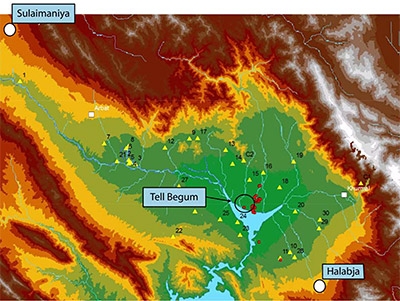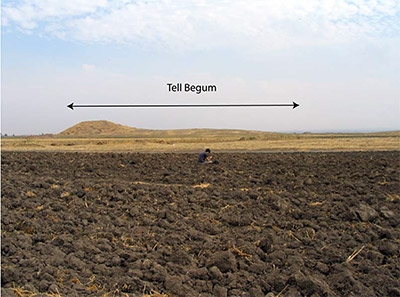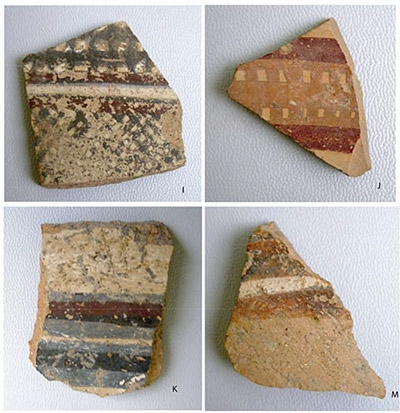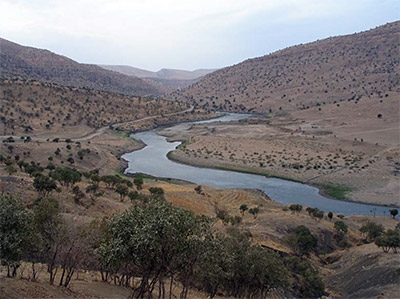Rescuing Tell Begum
Olivier Nieuwenhuyse, member of the Faculty of Archaeology, was successful in receiving a grant from the Bijvanck Foundation for a first campaign of work at Tell Begum, northern Iraq (Iraqi Kurdistan). A small international team directed by Olivier Nieuwenhuyse in a joint effort with the Directorate General of Antiquities and Heritage shall be in the field a few weeks later this summer to explore the potential for a more substantial project at this intriguing prehistoric site and to develop local partnerships.

Tell Begum is a small (ca. 4ha), low mound (Arabic: Tell) situated in the Danbard-i-Khan Dam area, close to the lively city of Sulaimaniyah. Anticipating the construction of the dam Iraqi archaeologists trenched the mound in the 1960’s and discovered that it dated to the Late Neolithic (Halaf) and the Late Chalcolithic (Early Uruk) periods. Published in preliminary fashion, these results were not further explored.
The Late Neolithic and Chalcolithic periods in the ancient Near East have for long remained virtual terra incognita, but have emerged as key themes for prehistoric research over the past decades. In 2009 Leiden archaeologists hosted the ground-breaking international conference Interpreting the Late Neolithic of Upper Mesopotamia, at which a large community of scholars synthesized much recent work and outlined avenues for future study. It is now generally acknowledged that these two long periods were very dynamic and saw the first introduction of innovations that include secondary products, formalized practices of administration, and more complex social structures. The role of northern Iraq during these times remains very poorly understood, however. Often this region is considered a mere periphery, or even it is ignored entirely; arguably such views are based largely on the near-total absence of solid archaeological data.

A first visit to the mound last autumn made it clear that Tell Begum may hold much potential for investigating later prehistoric societies. Surface finds include beautiful, polychrome-painted Halaf pottery, plain Late Chalcolithic ceramics, lithic tools and cores, and scrapers for pottery production. The site appears to have been abandoned after the Late Chalcolithic; no Bronze Age or Classical Period ‘overburden’ obstructs access to the prehistoric strata. Intriguingly, the surface finds have close matches at archaeological sites from the traditional ‘core areas’ of Near Eastern archaeology, in the valleys of the Euphrates and the Tigris rivers that connect the Upper Mesopotamian plains with the Sumerian lowlands. The Shahrizor Valley of northern Iraq appears to have been much more integrated in the cultural mosaic of ancient Mesopotamia than was hitherto thought.


Lying within an active lake area, Tell Begum stands with her feet in the water every winter. The retracting water each summer slowly erodes her slopes. Eventually the site will disappear completely: our project is a form of ‘rescue archaeology’. In this first, pioneering campaign our goals are to document the site as best as possible, and to understand its history of human occupation. We shall map the site with TS and conduct an intense surface collection. The two earlier Iraqi trenches are still clearly visible at the mound, but they have become filled-in and their sections are severely eroded. We will clean these trenches to gain an overview of the long-term biography of the mound. In addition we will open new areas adjacent to the older Iraqi soundings. These will not be excavated to significant depth; rather we will employ scraping to gain insight in the nature and state of preservation of the underlying remains.
